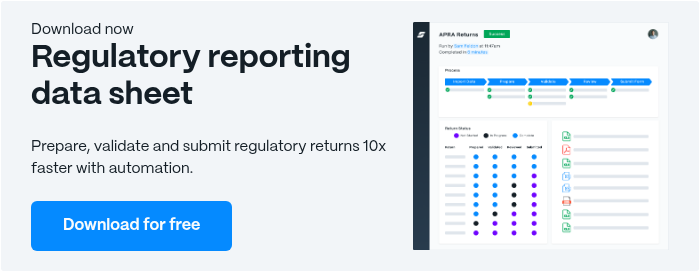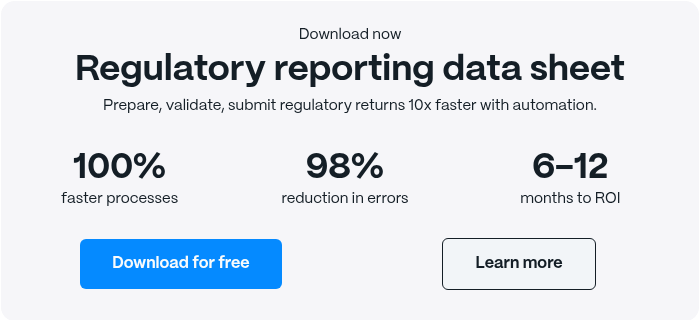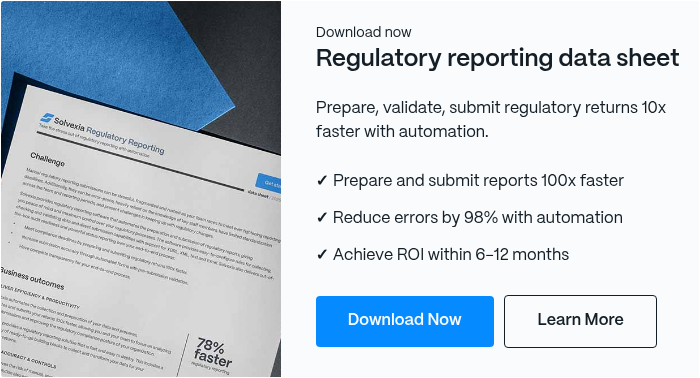Strategic Risk Examples & How to Tackle Them

As a professional in business, you’ve probably already faced a fair share of the different types of strategic risk. In an effort to combat, overcome, or prevent strategic risk from causing undesirable effects, we will look at strategic risk examples and share solutions for mitigating and/or managing them.
Coming Up
2. What is Strategic Risk Management?
3. Why is Strategic Risk Management Important?
4. What is the Difference Between Operational and Strategic Risk?
5. What are Strategic Risk Examples?
6. What are 9 Examples of Strategic Risk?
7. How to Overcome Different Types of Strategic Risk?
What is Strategic Risk?
Strategic risk are events, whether internal or external, that impact an organisation’s ability to reach their objectives and goals. As is the case with risk, it refers to probability. In this case, it’s the probability that an organisation’s strategy will fall short of goals.
As Edinburgh Business School professors Roberts, Wallace, and McClure defined the concept, strategic risk is corporate-level risk that “affects the development and implementation of an organisation’s strategy.”
Since businesses are dynamic, strategic risk may look different at various points in time, as factors outside of the company’s control can get in the way of achieving goals.
For example, if you are a bank with major market share, then competitive risk may not currently be at the top of your mind. But, if a new entrant comes into the space and starts to threaten your market share, then competitive risk becomes a focal point.
Strategic risk management will take these events into account before they happen so that you can be adequately prepared with a game plan.
What is Strategic Risk Management?
Strategic risk management is the process of identifying strategic risk, analysing potential outcomes, and then choosing which path to take to manage and mitigate the risks from occurring.
As mentioned, the first step in strategic risk management is to identify strategic risks. There are also a set of following steps involved in the management process, which looks like this:
- Identify strategic risks
- Perform a strategic risk assessment (this is an analysis of how likely each risk is to take place)
- Determine the strategy for dealing with each risk
- Monitor the risk over time
- Document and report each stage of the process for future reference and analysis
Perhaps the most difficult step in the strategic risk management process is to identify the risk. In order to do so, you’ll need to have an in-depth understanding of your organisation’s current standing. This includes details about your market sector, target audience, and the like.
You’ll also need to have a strong hold on what your organisation is looking to accomplish. This way, you can see what may stand in your business’ way of doing so.
Depending on the level and effects of each strategic risk, you may decide to accept the risk. If the consequences could be too large to overcome, then you may approach the situation in an entirely different way to avoid the risk entirely.
Why is Strategic Risk Management Important?
The entire existence of any business is filled with risk. The more you want to innovate and grow, the more risks you are likely to face.
Strategic risk management is vital to an organisation’s eventual success. This is because with a strong strategic risk management process in place, you can make more informed decisions. Regardless of if you’re starting a new business or attempting to innovate in your existing market, strategic risks exist.
To overcome and continue along your path to achieve organisational goals, strategic risk management proves essential.
Fortunately, technology has made it easier to manage strategic risk. For example, financial automation tools like Solvexia have made it simpler to adhere to compliance and regulations, secure data properly, conduct trend analysis, and provide audit trails when needed.
We’ll soon go more into depth as to how tools like Solvexia can support your company’s strategic risk management processes.
What is the Difference Between Operational and Strategic Risk?
Strategic risk is commonly confused with another type of risk, operational risk. To better define strategic risk, we can expand what operational risk is to compare the two.
Operational risks are related to systems, products, and processes. They affect the day-to-day inner workings of a business, and for that reason, they are explored from the ground-level.
On the other hand, strategic risk is more broad, long-term, and affects the future of an organisation. This high-level look at risk must take into account organisational objectives in relation to decision-making.
What are Strategic Risk Examples?
Before we categorise strategic risk into its types, let’s touch on a few strategic risk examples. They include:
- Launching a new product
- Mergers and acquisitions
- Defining a price model with market share
- Supply chain issues (i.e. a supplier gains monopoly control)
- Trade agreement changes that impact barriers to entry
- Company assets are nationalised
- Terrorist attacks that threaten a business’ livelihood or ability to conduct business
- A key product going off patent (opening the door to competition)
- A shift in technology that causes a company’s products to become obsolete
As you can see, strategic risk is often caused by events outside of a business’ internal operations. The level of uncertainty involved is what often makes dealing with strategic risk so complicated.
While you can’t know what will happen in the future for certain, you can look to historical data and trends to prepare. With technology like Solvexia that can perform data analysis, you can take advantage of evaluating strategic risks more efficiently and effectively.
What are 9 Examples of Strategic Risk?
Strategic risk comes in different forms, including both internal and external factors. The inherent definition of risk is that it’s the chance of something happening.
So, while you can’t always know exactly what will happen, you can be aware of what strategic risks you may face in order to be prepared (and make decisions accordingly and based on probability).
The types of strategic risk can be categorised as:
1. Regulatory risk
New regulations can massively disrupt your business if you’re not prepared. It can create the need for new technologies or distract business leaders from current operations.
2. Reputational risk
With regulatory changes or poor company performance, your organisation’s reputation can be affected. Poor press or events can affect brand loyalty and market share.
3. Political risk
Political volatility affects supply chain, pricing, and demand.
4. Governance risk
With poor governance and compliance in your day-to-day processes, you open the door to governance risk, which ultimately affects reputational risk, too.
5. Financial risk
Any risk that impacts the financial health of the organisation. For example, insufficient cash flow can strain your organisation from being able to produce products or bring them to market and reach its targets.
6. Competitive risk
The risk that your competition innovates faster or better than you, thereby overtaking your organisation’s market share.
7. Change risk
With digital transformation, change management is essential. By foregoing proper change management, your organisation’s employees may not be aligned to achieve organisational goals with the aid of technology on your side.
8. Economic risk
The effect of macroeconomic conditions on a company’s bottom line or investments.
9. Operational risk
The risk of having outdated business processes.
These risks are often interconnected. If you consider a regulatory risk, it will likely coincide with governance risk. Or, when facing operational risk, it typically impacts the bottom line and can expose you to financial risk.
How to Overcome Different Types of Strategic Risk?
Since the types of strategic risks are connected, it’s optimal to take an integrated approach to strategic risk management. When you see the connections between risks, it can make business decisions more straightforward.
Here’s how you can overcome or mitigate the nine types of strategic risk examples:
- Regulatory risk: Be aware of trends and changes in regulations. Utilise an automation tool like Solvexia that inherently reduces your compliance risk by standardising processes and adhering to pre-set rules.
- Reputational risk: Improve your governance, risk and compliance (GRC) strategies to protect your reputational risk. Again, technology helps here.
- Political risk: Although you have less control when it comes to politics than some of the other strategic risks, you can make decisions that reduce risk, such as choosing suppliers in less volatile countries, for example.
- Governance risk: Define, standardise, and monitor your governance controls. Solvexia provides you with a solution that centralises data and secures it so that you can have the oversight you need for your various business processes.
- Financial risk: Take control of financial risk by improving your ability to monitor and respond to it. For example, if you operate in the financial sector, your risk of fraud is typically high. But, as mentioned, risks are interconnected so with strong governance comes a lower chance of financial risk. Solvexia can monitor your financial risk and notify you should something seem fishy so you can tackle it before the risk affects more aspects of your business.
- Competitive risk: Utilise data to your advantage to truly get a grasp of the competitive landscape you face. Business intelligence is pivotal here.
- Change risk: Good governance and effective change management can help you to overcome any change risk challenges you’d otherwise face.
- Economic risk: Keep abreast of external events that can impact your business model and goals. Make business decisions that take such events into account.
- Operational risk: This is perhaps the most controllable type of strategic risk because it’s how you structure your operations. Be sure to take advantage of software solutions like Solvexia which can automate tasks, streamline business processes, and ensure accurate data.
Final Thoughts
The strategic risk examples covered herein go to show that all organisations face strategic risks. The real difference between a successful and unsuccessful business is how you choose to manage and reduce strategic risk.
Automation solutions like Solvexia can help reduce many different types of strategic risks by providing analysis capabilities, automation, standardisation, reporting, and a high level of internal control.
Don’t hesitate to request a demo and talk to our team about how Solvexia’s solutions can help your business overcome the challenge of strategic risks.
FAQ
Intelligent reconciliation solution
Intelligent rebate management solution
Intelligent financial automation solution
Intelligent Financial Automation Solution
Intelligent financial automation solution
Intelligent financial automation solution
Intelligent financial automation solution
Intelligent financial automation solution
Intelligent regulatory reporting solution
Free up time and reduce errors
Recommended for you

Request a Demo
Book a 30-minute call to see how our intelligent software can give you more insights and control over your data and reporting.

Reconciliation Data Sheet
Download our data sheet to learn how to automate your reconciliations for increased accuracy, speed and control.

Regulatory Reporting Data Sheet
Download our data sheet to learn how you can prepare, validate and submit regulatory returns 10x faster with automation.

Financial Automation Data Sheet
Download our data sheet to learn how you can run your processes up to 100x faster and with 98% fewer errors.

Financial Automation Data Sheet
Download our data sheet to learn how you can run your processes up to 100x faster and with 98% fewer errors.

Financial Automation Data Sheet
Download our data sheet to learn how you can run your processes up to 100x faster and with 98% fewer errors.

Financial Automation Data Sheet
Download our data sheet to learn how you can run your processes up to 100x faster and with 98% fewer errors.

Financial Automation Data Sheet
Download our data sheet to learn how you can run your processes up to 100x faster and with 98% fewer errors.

Financial Automation Data Sheet
Download our data sheet to learn how you can run your processes up to 100x faster and with 98% fewer errors.

Rebate Management Data Sheet
Download our data sheet to learn how you can manage complex vendor and customer rebates and commission reporting at scale.

Top 10 Automation Challenges for CFOs
Learn how you can avoid and overcome the biggest challenges facing CFOs who want to automate.
.svg)









